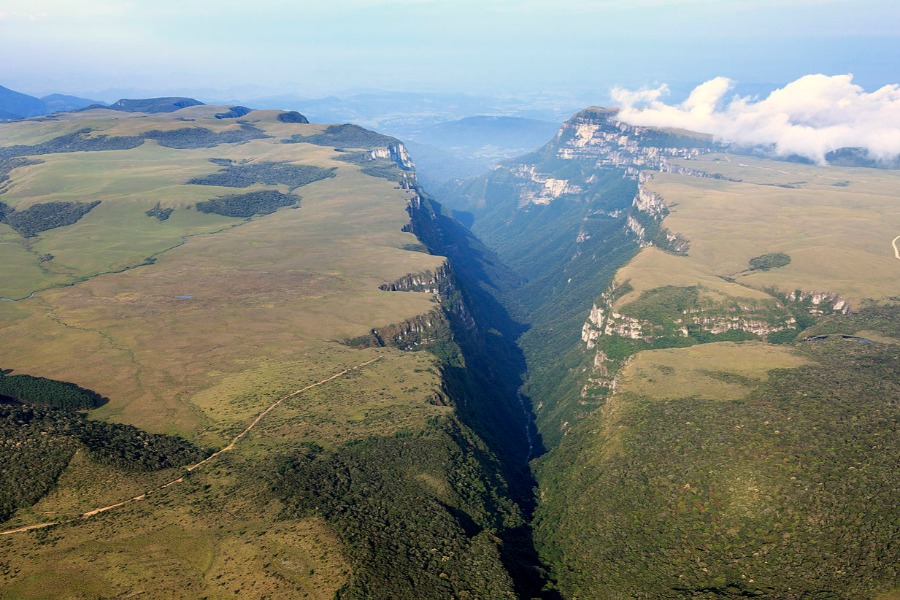
Serra Geral National Park
03-07-2021
The Serra Geral National Park, founded in 1992 on the border between the Brazilian states of Rio Grande do Sul and Santa Catarina, is an integral unit of nature conservation. The territory of the park adjoins the Aparados da Serra National Park and forms an ecosystem of rare beauty and an important area of ??biodiversity intended for scientific, cultural and recreational purposes.
The park covers an area of ??17,301.96 hectares divided between the municipalities of Jacinto Machado and Praia Grande in Santa Catarina and Cambará do Sul in Rio Grande do Sul. The nearest town is Cambará do Sul, approximately 190 km from the Gaucho state capital, Porto Alegre.
The southern relief of Santa Catarina is accentuated, with mountains and deep valleys delimiting the edge of the plateau. On the Gaucho side (Rio Grande do Sul), the immense plateau, characterized by shallow valleys and undulations of land, is abruptly interrupted in the east by vertical abysses with basaltic walls that lead to the coastal region and form grandiose gorges, including Churriado, Malacara and Fortaleza, with borders at an average altitude of 950 m, from which you can see the Atlantic on a clear day, as well as the coastal towns of Praia Grande and Torres du Rio Grande do Sul.
The forests of Araucaria, the open Savannas and the tropical Atlantic forests coexist on the southern plateau of Brazil, formed millions of years ago by intense volcanic activity, with transition zones and countless sources of crystalline rivers. There is also the flower, symbol of Rio Grande do Sul: the “princess's earring” characteristic of the region. The climate is super-dry with average annual temperatures between 18 and 20 ° C. January is the hottest month with averages between 20 and 22 ° C and an absolute maximum of 34 to 36 ° C, while June and July are the coldest months of the year with an absolute minimum of -4 to -8 ° C. As the climate is mountainous, weather conditions can change rapidly at any time of the year, with temperatures below 10 ° C being common in midsummer.
The local wildlife is rich and consists of rare species such as the maned wolf (Chrysocyon brachyurus), the puma (Felis concolor), the wild graxaim (similar to coyote) and Pampas deer (Ozotocerus bezoarticus), as well as foxes, possums, armadillos and howler monkeys. Among the birds are the blue jay (Cyanocorax caeruleus), the parrot, parakeets, partridges, quail and teal, as well as the typical lapwing (Vanellus chilensis), a bird symbol of the pampa gaucha. The harpy eagle (Spizaetus tirannus) and the gray eagle (Harpyhaliaetus coronatus) are sometimes seen in steep inaccessible areas and are threatened with extinction.
Picture: Canyon Fortaleza Skyfoto Marcos Alexandre CC BY-SA 3.0 Wikimedia Commons